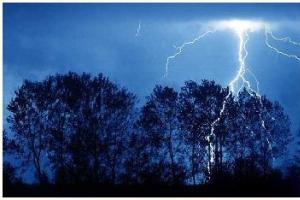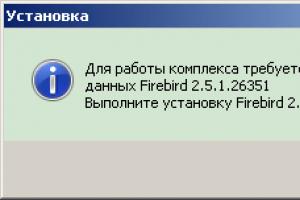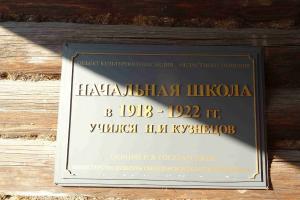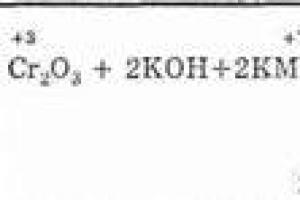Lightning discharges ( lightning) is the most common source of naturally occurring powerful electromagnetic fields. Lightning is a type of gas discharge with a very long spark length. The total length of the lightning channel reaches several kilometers, and a significant part of this channel is located inside a thundercloud. Lightning The cause of lightning is the formation of a large volumetric electric charge.
Ordinary source of lightning are thunderstorm cumulonimbus clouds that carry an accumulation of positive and negative electrical charges in the upper and lower parts of the cloud and form electric fields of increasing intensity around this cloud. The formation of such space charges of different polarities in the cloud (cloud polarization) is associated with condensation due to the cooling of water vapor of rising warm air flows on positive and negative ions (condensation centers) and the separation of charged droplets of moisture in the cloud under the influence of intense ascending thermal air flows. Due to the fact that several charge clusters isolated from each other are formed in the cloud (mainly charges of negative polarity accumulate in the lower part of the cloud).
Lightning discharges can be divided into several types based on external signs. Regular type - linear lightning, with varieties: ribbon, rocket, zigzag and branched. The rarest type of discharge is ball lightning. There are known discharges called “St. Elmo’s Fire” and “Glow of the Andes.” Lightning usually occurs multiple times, i.e. consists of several single discharges developing along the same path, and each discharge, just like the discharge obtained in laboratory conditions, begins with a leader and ends with a reverse (main) discharge. The descent speed of the leader of the first single discharge is approximately 1500 km/s, the speed of the leaders of subsequent discharges reaches 2000 km/s, and the speed of the reverse discharge varies within 15000 -150000 km/s, i.e. from 0.05 to 0.5 speed Sveta. The leader channel, like the channel of any streamer, is filled with plasma and therefore has a certain conductivity.
The upper end of the leader channel is connected to one of the charged centers in the cloud, so part of the charges of this center flows into the leader channel. The charge distribution in the channel should be uneven, increasing towards its end. However, some indirect measurements suggest that the absolute value of the charge on the leader head is small and, to a first approximation, the channel can be considered uniformly charged with a linear charge density S. The total charge in the leader channel in this case is equal to Q = S*l, where l is the channel length , and its value is usually about 10% of the value of the charge flowing into the ground during a single lightning discharge. In 70-80% of all cases, this charge has a negative polarity. As the leader channel moves, under the influence of the electric field it creates in the ground, charges shift, and charges opposite in sign to the leader charges (usually positive charges) tend to be located as close as possible to the head of the leader channel. In the case of homogeneous soil, these charges accumulate directly under the leader channel.
If the soil is heterogeneous and its main part has a high resistivity, charges are concentrated in areas with high conductivity (rivers, groundwater). In the presence of grounded, towering objects (lightning rods, chimneys, tall buildings, rain-drenched trees), the charges are drawn to the top of the object, creating significant field strength there. At the first stages of development of the leader channel, the electric field strength at its head is determined by the leader’s own charges and clusters of space charges located under the cloud. The leader's trajectory is not connected with earthly objects. As the leader descends, accumulations of charges on the ground and elevated objects begin to have an increasing influence. Starting from a certain height of the leader's head (orientation height), the field strength in one of the directions turns out to be the greatest, and the leader is oriented towards one of the ground objects. Naturally, in this case, elevated objects and areas of land with increased conductivity are predominantly affected (selective susceptibility). From very high objects, counter leaders develop towards the leader, the presence of which helps to orient the lightning towards a given object.
After the leader channel reaches the ground or the counter leader, a reverse discharge begins, during which the leader channel acquires a potential almost equal to the ground potential. At the head of the upwardly developing reverse discharge there is an area of increased electric field strength, under the influence of which a restructuring of the channel occurs, accompanied by an increase in the plasma charge density from 10^13 - 10^14 to 10^16 - 10^19 1/m3, due to which the channel conductivity increases at least 100 times. During the development of a reverse discharge, a current iM = v passes through the impact site, where v is the speed of the reverse discharge. The process that occurs during the transition of the leader discharge to the reverse discharge is in many ways similar to the process of a vertical charged wire shorting to ground.
If a charged wire is connected to ground through a resistance r, then the current at the grounding point is equal to: where z = characteristic impedance of the wire. Thus, even during a lightning discharge, the current at the strike site will be equal to v only if the grounding resistance is zero. When grounding resistances are different from zero, the current at the point of impact decreases. It is quite difficult to quantify this decrease, since the wave impedance of the lightning channel can only be roughly estimated. There is reason to believe that the characteristic impedance of the lightning channel decreases with increasing current, with the average value being approximately 200 - 300 Ohms. In this case, when the grounding resistance of an object changes from 0 to 30 Ohms, the current in the object changes by only 10%. In what follows, we will call such objects well grounded and assume that the full lightning current iM = v passes through them. Basic parameters of lightning and intensity of thunderstorm activity Lightning with high currents occurs extremely rarely. Thus, lightning with currents of 200 kA occurs in 0.7...1.0% of cases of the total number of observed discharges.

The number of cases of lightning strikes with a current value of 20 kA is about 50%. Therefore, it is customary to present the amplitude values of lightning currents in the form of probability curves (distribution functions), for which the probability of the occurrence of lightning currents with the maximum value is plotted along the ordinate axis. The main quantitative characteristic of lightning is the current flowing through the affected object, which is characterized by the maximum value iM, the average steepness of the front and the pulse duration ti, which is equal to the time the current decreases to half the maximum value. Currently, the largest amount of data is available on the maximum values of lightning current, the measurement of which is carried out by the simplest measuring instruments - magnetic recorders, which are cylindrical rods made of steel filings or wires pressed into plastic. Magnetic recorders are mounted near towering objects (lightning rods, transmission line supports) and are located along the magnetic field lines that arise when lightning current passes through the object. Since materials with high coercive force are used for the manufacture of recorders, they retain a large residual magnetization.
By measuring this magnetization, it is possible to determine the maximum value of the magnetizing current using calibration curves. Measurements with magnetic recorders do not provide great accuracy, but this disadvantage is partially compensated by the huge number of measurements, which currently number in the tens of thousands. By placing a frame closed to an inductive coil near the affected object, you can measure the slope of the lightning current using a magnetic recorder placed inside the coil. Measurements have shown that lightning currents vary widely from several kiloamperes to hundreds of kiloamperes, therefore the measurement results are presented in the form of probability curves (distribution functions) of lightning currents, on which the probability of lightning currents with a maximum value exceeding the value indicated is plotted on the abscissa axis. ordinate.
In Ukraine, when calculating lightning protection, the curve is used. For mountainous areas, the ordinates of the curve are reduced by 2 times, since at short distances from the ground to the clouds, lightning occurs at a lower density of charges in clusters, i.e., the probability of large currents decreases. It is much more difficult to experimentally determine the steepness and duration of a lightning current pulse, so the amount of experimental data on these parameters is relatively small. The duration of the lightning current pulse is mainly determined by the time of propagation of the reverse discharge from the ground to the cloud and, therefore, varies within a relatively narrow range from 20 to 80-100 μs. The average duration of a lightning current pulse is close to 50 μs, which determined the choice of the standard pulse.
The most important from the point of view of assessing the lightning resistance of RES are: the amount of charge transferred by lightning, the current in the lightning channel, the number of repeated strikes along one channel and the intensity of lightning activity. All these parameters are not determined unambiguously and are probabilistic in nature. The charge transferred by lightning fluctuates during the discharge process in the range from fractions of a coulomb to several tens of coulombs. The average charge dropped into the ground by repeated lightning is 15 - 25 C. Considering that on average a lightning discharge contains three components, therefore, during one component, about 5 - 8 C are transferred to the ground. Of these, about 60% of the entire given accumulation of charges flows into the leader channel, which amounts to 3 - 5 C. A lightning strike into flat areas of the earth's surface carries a charge of 10 - 50 C (on average 25 C), with lightning strikes in the mountains - a charge of 30 - 100 C (on average 60 C), with discharges into television towers the charge reaches 160 C.
When lightning strikes into the ground, the overwhelming majority (85 - 90%) transfer a negative charge to the ground. The charge flowing into the ground during multiple lightning varies from fractions of a coulomb to 100 C or more. The average value of this charge is close to 20 C. The charge released into the ground during thunderstorms appears to play a significant role in maintaining the negative charge of the ground. The intensity of thunderstorm activity in different climatic regions varies greatly. As a rule, the number of thunderstorms throughout the year is minimal in the northern regions and gradually increases to the south, where increased air humidity and high temperatures contribute to the formation of thunderclouds. However, this trend is not always followed. There are centers of thunderstorm activity in mid-latitudes (for example, in the Kyiv region), where favorable conditions are created for the formation of local thunderstorms.
The intensity of thunderstorm activity is usually characterized by the number of thunderstorm days per year or the total annual duration of thunderstorms in hours. The latter characteristic is more correct, since the number of lightning strikes into the ground does not depend on the number of thunderstorms, but on their total duration. The number of thunderstorm days or hours per year is determined on the basis of long-term observations of meteorological stations, the generalization of which makes it possible to draw maps of thunderstorm activity, on which lines of equal duration of thunderstorms are plotted - isokeranic lines. The average duration of thunderstorms per thunderstorm day for the territory of the European part of Russia and Ukraine is 1.5-2 hours.
Giant electrical discharges in the atmosphere - lightning - arise under the influence of streams of charged particles from space, so-called cosmic rays, and the discharges themselves are accompanied by flashes of gamma radiation, a group of scientists from the Lebedev Physical Institute of the Russian Academy of Sciences (FIAN) under the leadership of Academician Alexander Gurevich has established.
The nature of lightning was unraveled back in 1749 by the American naturalist Benjamin Franklin, who established that lightning is electrical discharges between a thundercloud and the ground. Until now, scientists believed that when negative charges accumulate in a cloud, an electric field arises between it and the surface, and when it reaches a certain threshold energy, a “breakdown” occurs and an electrical discharge occurs - lightning.
 “Everything would be great, but the calculated value of the threshold field is ten times greater than the actually observed value of the electric field at which lightning occurs,” said one of the members of Gurevich’s research group, Corresponding Member of the Russian Academy of Sciences Kirill Zybin, in an interview with RIA Novosti.
“Everything would be great, but the calculated value of the threshold field is ten times greater than the actually observed value of the electric field at which lightning occurs,” said one of the members of Gurevich’s research group, Corresponding Member of the Russian Academy of Sciences Kirill Zybin, in an interview with RIA Novosti.
“We need some kind of seed for lightning; apparently, seed particles of sufficiently high energies are required. In natural conditions, cosmic rays are such natural particles,” the agency’s interlocutor said.
He and his colleagues found that the occurrence of lightning is associated with a phenomenon called “runaway electron breakdown” - an avalanche-like multiplication in matter of fast electrons with an energy of 0.1-10 megaelectronvolts, the cause of which, in turn, is the action of cosmic radiation. Streams of high-energy particles penetrating into the atmosphere supply “seed electrons,” which provoke breakdown at fields ten times lower than required by the previous theory.
“Of course, it is impossible to say that lightning is a breakdown on runaway electrons. But they are connected. In ordinary discharges, such high energies could not appear in gamma rays,” Zybin said.
According to him, experimental testing of the theory poses great difficulties: under normal atmospheric conditions, the length of the “avalanche” that occurs during a breakdown reaches 50 meters.
“In this case, you need to build huge machines, apply very large fields. But such conditions are naturally realized in a thunderstorm atmosphere,” he said.
Another effect associated with lightning is gamma-ray flashes. Lightning does not move evenly, but in jumps - “steps”. Scientists have discovered that at each “step” gamma quanta with an energy of tens of megaelectronvolts are emitted.
According to Zybin, at the high-mountain station of the Lebedev Physical Institute in the Tien Shan, experiments are being conducted to study lightning in a “natural environment.”
“Counters are placed there and gamma radiation is measured, and the readings occur at very short intervals of time. We can say unequivocally that in the absence of a thunderstorm there are no signals, but when a thunderstorm begins, strong flashes, gamma bursts begin, they correlate with radio pulses that are caused thunderstorm processes," the scientist said.
He noted that studying the mechanisms of lightning formation will make it possible to understand recently discovered phenomena, in particular, giant high-altitude discharges between thunderclouds and the ionosphere (“sprite”).
According to FIAN scientists, these studies provide new opportunities both in the analysis of climate change and in the mechanisms of influence on the atmosphere.
The nature of lightning was unraveled back in 1749 by the American naturalist Benjamin Franklin, who established that lightning is electrical discharges between a thundercloud and the ground. Until now, scientists believed that when negative charges accumulate in a cloud, an electric field arises between it and the surface, and when it reaches a certain threshold energy, a “breakdown” occurs and an electrical discharge occurs - lightning.
“Everything would be great, but the calculated value of the threshold field is ten times higher than the actually observed value of the electric field at which lightning occurs,” said one of the members of Gurevich’s research group, Corresponding Member of the Russian Academy of Sciences Kirill Zybin. “We need some kind of seed for lightning; apparently, seed particles of sufficiently high energies are required. In natural conditions, cosmic rays are such natural particles,” the agency’s interlocutor said.
He and his colleagues found that the occurrence of lightning is associated with a phenomenon called “runaway electron breakdown” - an avalanche-like multiplication in matter of fast electrons with an energy of 0.1-10 megaelectronvolts, the cause of which, in turn, is the action of cosmic radiation. Streams of high-energy particles penetrating into the atmosphere supply “seed electrons,” which provoke breakdown at fields ten times lower than required by the previous theory.
“Of course, it is impossible to say that lightning is a breakdown on runaway electrons. But they are connected. In ordinary discharges, such high energies could not appear in gamma rays,” Zybin said. According to him, experimental testing of the theory poses great difficulties: under normal atmospheric conditions, the length of the “avalanche” that occurs during a breakdown reaches 50 meters.
“In this case, you need to build huge machines, apply very large fields. But such conditions are naturally realized in a thunderstorm atmosphere,” he said. Another effect associated with lightning is gamma-ray flashes. Lightning does not move evenly, but in jumps - “steps”. Scientists have discovered that at each “step” gamma quanta with an energy of tens of megaelectronvolts are emitted.
According to Zybin, at the high-mountain station of the Lebedev Physical Institute in the Tien Shan, experiments are being conducted to study lightning in a “natural environment.” “Counters are placed there and gamma radiation is measured, and the readings occur at very short intervals of time. We can say unequivocally that in the absence of a thunderstorm there are no signals, but when a thunderstorm begins, strong flashes, gamma bursts begin, they correlate with radio pulses that are caused thunderstorm processes," the scientist said.
He noted that studying the mechanisms of lightning formation will make it possible to understand recently discovered phenomena, in particular, giant high-altitude discharges between thunderclouds and the ionosphere (“sprite”).
According to FIAN scientists, these studies provide new opportunities both in the analysis of climate change and in the mechanisms of influence on the atmosphere.
Russian physicists are very close to unraveling the mechanism by which lightning occurs during a thunderstorm. A suggestion about how this could happen was made by Russian scientist Alexander Gurevich back in 1992. But only recently has it become possible to experimentally test his hypothesis. The very first stage of lightning formation is now being studied.
Thus, in the Laboratory of Problems of New Accelerators of the Lebedev Physical Institute, an experimental installation was launched that makes it possible to study the processes of formation of a long spark in the air - the closest analogue of the well-known lightning that occurs during a thunderstorm. Experiments at the new facility are carried out in accordance with the provisions of the “Theory of Runaway Electron Breakdown”, developed by Academician Alexander Gurevich.
Despite the fact that lightning is not a rare phenomenon (probably all the inhabitants of our planet have seen it at least once in their lives), the mechanism of occurrence of this formidable and beautiful natural phenomenon has still not been studied.
Moreover, the knowledge that scientists have suggests that lightning cannot occur during a thunderstorm, since, according to available data, the electric fields near thunderclouds are significantly less than what is necessary for the occurrence of electrical discharges. However, they nevertheless arise, and sometimes even several per minute.
Back in 1992, trying to somehow solve this paradox, Russian physicist Alexander Gurevich formulated the so-called “Runaway Electron Breakdown Theory.” Briefly, its essence is this.
Numerous observations and calculations have shown that in air, most electrons have a mean free path (that is, the distance a particle travels between two collisions with surrounding molecules, atoms and particles) of about one centimeter.
However, there are so-called fast electrons, which move at a speed close to the speed of light. Accordingly, they have a free path length 100 times greater, that is, about a meter.
Gurevich suggested that if these fast electrons (they are called runaway electrons), rushing at enormous speed, collide with air molecules, then as a result, several more of the same fast electrons will be released from the latter. Thus, several "pioneers" stimulate the appearance of a horde of secondary runaway electrons. They, in turn, are also accelerated by the field.
As a result, an exponentially growing avalanche of runaway electrons appears, along with which the number of slow (thermal) electrons also increases. They are also knocked out as a result of collisions of fast electrons with molecules. This situation is reminiscent of the fall of a line made up of dominoes, the only difference is that in this case some tiles fall slowly and do not touch others, and some quickly, dropping their neighbors.
It is assumed that all this should lead to a rapid increase in the electrical conductivity of the medium (which, as we know, increases with an increase in the concentration of free charge carriers). As a result, a phenomenon occurs that physicists call “electrical breakdown.”
By the way, this phenomenon is familiar to every car enthusiast - it is the presence of such a breakdown of the fuel-air mixture on the spark plug in an internal combustion engine that allows the engine to start (in this situation it is usually called a “spark”). During breakdown, the charge carrier at the mean free path acquires energy sufficient to ionize the molecules of the crystal lattice or gas.
This ionization occurs when particles strip electrons from them, without which the molecules become positively charged ions. The torn electrons, in turn, also become free charge carriers, which make the main contribution to the total current.
However, the breakdown itself is not lightning. However, as a result of this phenomenon, a multi-kilometer layer of conducting plasma is formed. But it is already capable of creating that very thunderstorm discharge that we call lightning.
Calculations carried out by Gurevich showed that in the atmosphere a breakdown can occur at an electric field strength significantly lower than that required for a normal breakdown (like what happens on car spark plugs).
Thus, at a pressure of one atmosphere, the threshold field for conventional breakdown is 23 kV/cm, and for runaway electron breakdown - 2.16 kV/cm. It turns out that runaway electrons may well create all the conditions necessary for the occurrence of this phenomenon.
But where do the very first runaway electrons come from? The scientist suggested that they appear under the influence of cosmic radiation. In the upper layers of the atmosphere, it ionizes air molecules, releasing a small number of runaway electrons, which, when entering the thunderstorm area, cause a breakdown.
By the way, this should produce powerful flashes of X-ray radiation. And, as data obtained from experiments carried out on airplanes and balloons showed, this really does happen (the first such flash during a thunderstorm was recorded back in 1960, but then no one could explain where it came from).
A series of field experiments conducted at the end of the last - beginning of this century at the Tien Shan high-mountain scientific station of the Lebedev Physical Institute seemed to confirm this theory. However, now it is possible to study this mechanism in laboratory conditions.
True, scientists immediately stated that no one is going to create artificial lightning yet . “Our task is not to simulate lightning, since this is a multi-stage process, but its initial, that is, pre-breakdown stage,” says Alexander Oginov, senior researcher at the Laboratory of Problems of New Accelerators of the Lebedev Physical Institute, Candidate of Physical and Mathematical Sciences. However, this also seems to be very interesting for scientists.
An experimental setup for modeling an analogue of a high-altitude atmospheric discharge was created by employees of the Physical Institute of the Russian Academy of Sciences and the Institute of High-Current Electronics of the SB RAS (Tomsk) on the basis of an electronic relativistic generator, including a pulse voltage generator.
It can be used to detect the presence of runaway electrons in the air. Scientists study their behavior, determine their main characteristics and observe their effect on the molecules of the surrounding air.
“Now we are at the stage of accumulating experimental data, but many new interesting results have already been obtained. The plans are to obtain not a statistical, but a dynamic effect, that is, not to wait for the appearance of a “seed” electron, but to learn how to create it.
And then, by injecting a seed beam of electrons, I hope we will unambiguously detect the enhancement. And thereby we will confirm the possibility of breakdown on runaway electrons in accordance with the conclusions of the theory,” Alexander Oginov comments on the results of the experiments.
Lightning is a spark discharge of static electricity accumulated in thunderclouds. Unlike the charges generated at work and in everyday life, the electrical charges accumulated in the clouds are disproportionately greater. therefore, the energy of the spark discharge - lightning and the currents resulting from it are very high and pose a great danger to humans, animals, and buildings. lightning is accompanied by a sound impulse - thunder. The combination of lightning and thunder is called a thunderstorm.A thunderstorm is an exceptionally beautiful natural phenomenon. As a rule, after a thunderstorm the weather improves, the air becomes transparent, fresh and clean, saturated with ions formed during lightning discharges.
Despite this, it must be remembered that a thunderstorm in certain conditions can pose a great danger to humans. Every person should know the nature of the thunderstorm phenomenon, the rules of conduct during a thunderstorm and methods of protection against lightning.
Thunderstorm is a complex atmospheric process, and its occurrence is caused by the formation of cumulonimbus clouds. heavy cloudiness is a consequence of significant atmospheric instability. A thunderstorm is characterized by strong winds, often intense rain (snow), sometimes with hail. before a thunderstorm (an hour or two before a thunderstorm), the atmospheric pressure begins to drop quickly until the wind suddenly increases, and then begins to rise.
Thunderstorms can be divided into local, frontal, night, and in the mountains. most often a person encounters local or thermal thunderstorms. These thunderstorms occur only in hot weather with high atmospheric humidity. As a rule, they occur in the summer at midday or afternoon (12-16 hours). water vapor in the rising flow of warm air condenses at altitude, releasing a lot of heat and heating the rising air flows. Compared to the surrounding air, the rising air is warmer and increases in volume until it becomes a thundercloud. Ice crystals and water droplets constantly hover in large thunderclouds. as a result of their fragmentation and friction with each other and with the air, positive and negative charges are formed, under the influence of which a strong electrostatic field arises (the electrostatic field strength can reach 100,000 V/m). and the potential difference between individual parts of the cloud, clouds or cloud and earth reaches enormous values. When the critical intensity of the electric air is reached, an avalanche-like ionization of the air occurs - a lightning spark discharge.
A frontal thunderstorm occurs when a mass of cold air moves into an area where warm weather prevails. cold air displaces warm air, with the latter rising to a height of 5-7 km. warm layers of air invade into vortices of various directions, a squall is formed, strong friction between layers of air, which contributes to the accumulation of electrical charges. The length of a frontal thunderstorm can reach 100 km. Unlike local thunderstorms, it usually gets colder after frontal thunderstorms.
a night thunderstorm is associated with the cooling of the ground at night and the formation of eddy currents of rising air.
thunderstorms in the mountains are explained by the difference in solar radiation to which the southern and northern slopes of the mountains are exposed. night and mountain thunderstorms are weak and short-lived.
Thunderstorm activity varies in different areas of our planet. world centers of thunderstorms: Java island - 220, equatorial Africa - 150, southern Mexico - 142, Panama - 132, central Brazil - 106 thunderstorm days per year. Russia: Murmansk - 5, Arkhangelsk - 10, St. Petersburg - 15, Moscow - 20 thunderstorm days a year.
As a rule, the further south you go (for the northern hemisphere of the Earth) and the further north (for the southern hemisphere of the Earth), the higher the thunderstorm activity. Thunderstorms are very rare in the Arctic and Antarctic. 16 million thunderstorms occur on Earth per year. For every square kilometer of the Earth's surface there are 2-3 lightning strikes per year. The ground is most often struck by lightning from negatively charged clouds.
According to the type of lightning, lightning is distinguished into linear, pearl and ball. Pearl and ball lightning are quite rare occurrences.
Common linear lightning, which any person encounters many times, looks like a branching line. The current strength in the linear lightning channel is on average 60 - 170 kA; lightning with a current of 290 kA has been recorded. The average lightning carries energy of 250 kW/hour (900 MJ). energy is mainly realized in the form of light, heat and sound energies.
The discharge develops in a few thousandths of a second; at such high currents, the air in the zone of the lightning channel almost instantly heats up to a temperature of 30,000-33,000 ° C. As a result, the pressure rises sharply, the air expands - a shock wave appears, accompanied by a sound pulse - thunder.
Before and during a thunderstorm, occasionally in the dark on the tops of tall pointed objects (tops of trees, masts, tops of sharp rocks in the mountains, crosses of churches, lightning rods, sometimes in the mountains on people’s heads, raised hands or animals) one can observe a glow that has received name "St. Elmo's Fire". this name was given in ancient times by sailors who observed the glow at the tops of the masts of sailing ships.
The glow occurs due to the fact that on tall, pointed objects the electric field strength created by the static electric charge of the cloud is especially high; as a result, ionization of the air begins, a glow discharge occurs and reddish tongues of glow appear, at times shortening and lengthening again. You should not try to extinguish these fires, because there is no combustion. at high electric field strength, a bunch of luminous filaments may appear - a corona discharge, which is accompanied by hissing. Linear lightning can also occasionally occur in the absence of thunderclouds. It is no coincidence that the saying “bolt from the blue” arose.
pearl zipper a very rare and beautiful phenomenon. appears immediately after the linear lightning and disappears gradually. Predominantly, a pearl lightning discharge follows a linear path. lightning has the form of luminous balls located at a distance of 7-12 m from each other, resembling pearls strung on a thread. Pearl lightning may be accompanied by significant sound effects.
ball lightning also quite rare. per thousand ordinary linear lightning there are 2-3 ball lightning. ball lightning, as a rule, appears during a thunderstorm, more often towards its end, less often after a thunderstorm. occurs, but very rarely, in the complete absence of thunderstorm phenomena. can have the shape of a ball, ellipsoid, pear, disk, or even a chain of connected balls. the color of the lightning is red, yellow, orange-red, surrounded by a luminous veil. sometimes lightning is dazzling white with very sharp outlines. color is determined by the content of various substances in the air. The shape and color of lightning may change during a discharge. It was not possible to measure the parameters of ball lightning and simulate it in laboratory conditions. Apparently, many observed unidentified flying objects (UFOs) are similar or similar in nature to ball lightning. You can read more about the nature of ball lightning








